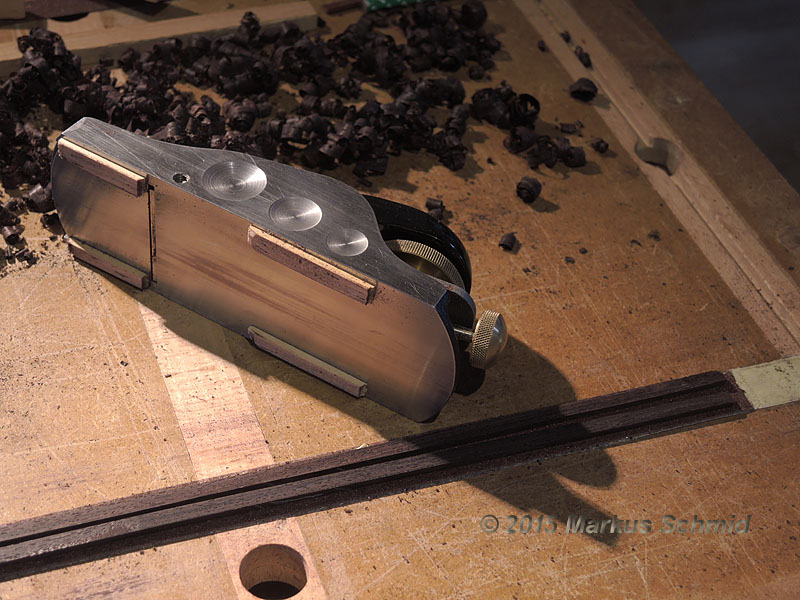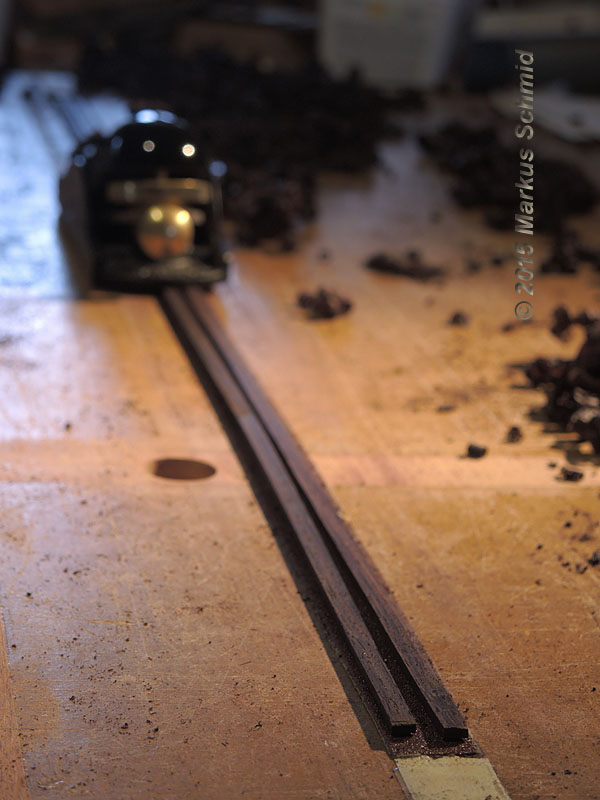The title is a bit exaggerated, but in any case dust production is quite a bit less than when using a drum sander.
It is similar to planing a piece in a groove, but the setup is much quicker and it eats up less storage space.
Of course it works only for narrower pieces than blade width. When thicknessing long and thin pieces it is recommendable to lay the stock on a strip of sandpaper (80 grit works great) instead of resting it against a stop. For very long pieces like binding strips and when no roll of sandpaper is within reach I stick shorter strips from sanpdpaper sheets to masking tape and reinforce the latter one with normal scotch tape. The skids get stuck with double-sided tape to the plane sole (holds up well and releases easily when done).
Sandpaper strip thickness, the double sided tape thickness and the shaving thickness have to bee accounted when thicknessing the skids in order to get the the right clearance (= final thickness of the working piece) between the cutting edge of the blade and the surface of the sandpaper where the working piece is resting on.

